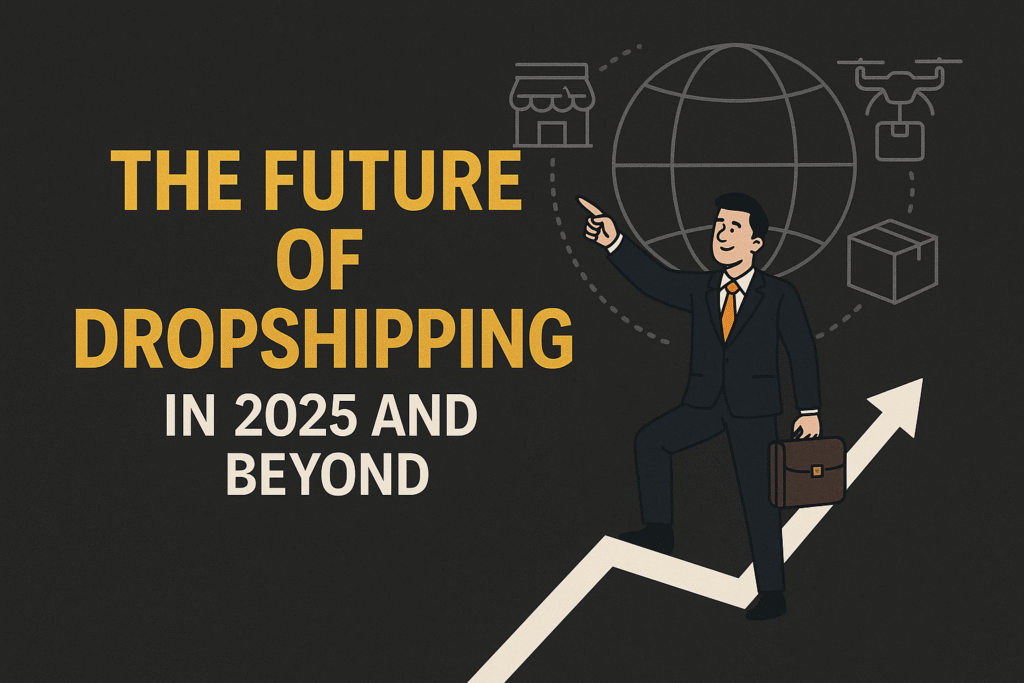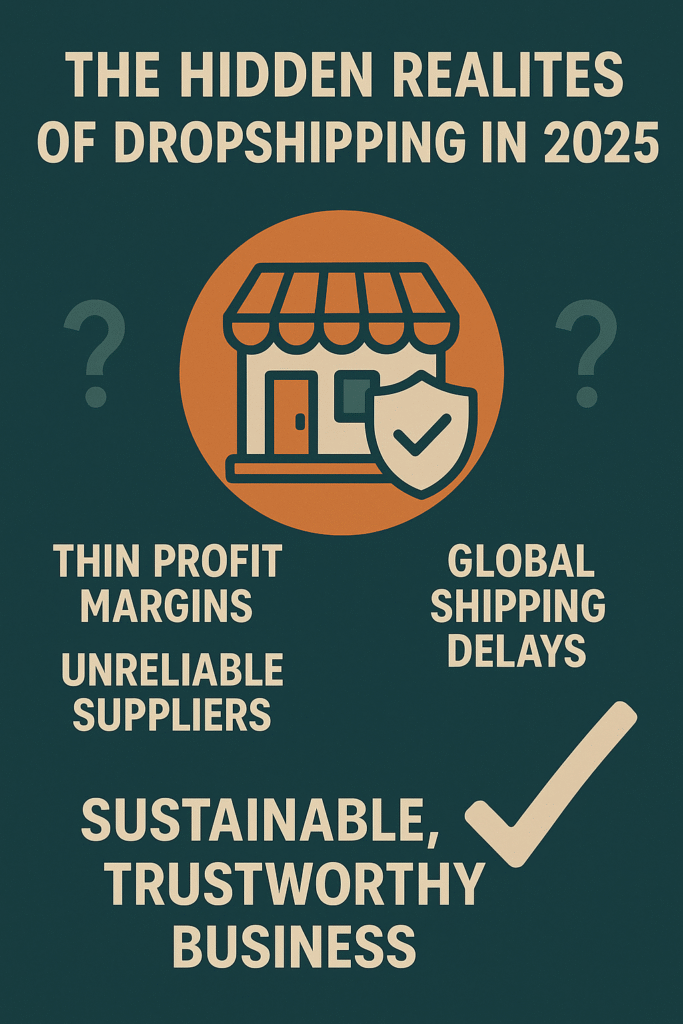Dropshipping has long been promoted as an easy way to make money online. The idea of selling products without holding inventory or handling shipping appeals to countless entrepreneurs worldwide. However, the reality in 2025 is far more complex than the success stories suggest. Many new dropshippers encounter challenges that are rarely discussed. Here’s the hidden side of dropshipping that no one tells you.

1. The Truth About Profit Margins in 2025
Many beginners enter dropshipping expecting massive profit margins. In reality, margins have become thinner due to competition, rising supplier costs, and platform fees. While some products may offer 20–30% profit margins, most sell at 10–15% after accounting for marketing and operational expenses. Strategic pricing, upselling, and cost management are essential for staying profitable.
2. Hidden Supplier Challenges
Suppliers are the backbone of dropshipping, but they come with risks. Delays, stock inconsistencies, and poor product quality can lead to unhappy customers. Many dropshippers underestimate the importance of building strong supplier relationships. Vetting suppliers and maintaining backup options is crucial to avoid unexpected disruptions.
3. The Role of AI and Automation
AI and automation are transforming dropshipping in 2025. Tools can manage inventory, automate marketing campaigns, and handle customer inquiries. While this reduces manual work and errors, over-reliance on automation can backfire. Mistakes in order fulfillment or customer communication can damage your brand if not monitored carefully.
4. Legal and Tax Risks Nobody Talks About
Dropshipping often involves international sales, which introduces complex legal and tax considerations. Import duties, VAT, sales taxes, and compliance with local regulations can create unexpected liabilities. Many dropshippers overlook these issues, resulting in fines or account suspensions. Understanding and adhering to these rules is critical for long-term success.
5. Customer Service Nightmares
Customer expectations are higher than ever. Delays, returns, and complaints can overwhelm small dropshipping businesses. Negative reviews spread quickly on social media, damaging credibility. Providing proactive, professional customer support is no longer optional—it’s a key factor in building trust and retaining customers.
6. The Impact of Global Shipping Delays
https://somtext.com/affiliate-marketing-the-definitive-guide-to-2025-online-income/Global supply chains are still fragile in 2025. Shipping delays, customs bottlenecks, and logistical issues affect delivery times and customer satisfaction. Dropshippers must communicate transparently with customers about potential delays and set realistic delivery expectations to maintain trust.
7. Why Most Dropshippers Fail
The majority of dropshippers fail due to unrealistic expectations, poor planning, and lack of differentiation. Many think listing trending products is enough, but success requires research, strategy, and marketing skills. Those who fail often ignore customer experience and focus solely on short-term profits.
8. Saturation and Product Research Myths
Product research tools promise “winning products,” but most niches are highly saturated. Chasing trends without strategy often leads to losses. Successful dropshippers focus on niches with long-term demand, unique value, and potential for repeat sales rather than one-hit wonders.
9. The Power of Building a Brand
Branding is no longer optional in dropshipping. Stores that offer consistent experiences, storytelling, and trust-building outperform generic shops. A strong brand increases customer loyalty, supports higher pricing, and ensures repeat business. Building a recognizable brand is the key to scaling sustainably.
http://dropshiping.com10. The Future of Dropshipping Beyond 2025
Dropshipping is evolving rapidly. AI-driven operations, personalized marketing, and ethical sourcing will define the future. Entrepreneurs who adapt, innovate, and focus on delivering real value will thrive. Those who chase shortcuts or ignore trends risk falling behind in an increasingly competitive market.

Conclusion
The hidden realities of dropshipping in 2025 reveal a business landscape far more challenging than most newcomers anticipate. From thin profit margins and unreliable suppliers to legal complexities, global shipping delays, and customer service challenges, success is not guaranteed. Many dropshippers fail because they underestimate competition, rely on “trending products,” or neglect the importance of building a strong brand.
Understanding these hidden aspects is crucial. Entrepreneurs who adapt to technological advancements like AI, focus on delivering value, and invest in brand-building will stand out in a saturated market. Dropshipping is no longer just about selling products—it’s about creating a sustainable, trustworthy business. By acknowledging the hidden challenges early, aspiring dropshippers can make informed decisions, mitigate risks, and position themselves for long-term success in 2025 and beyond.

